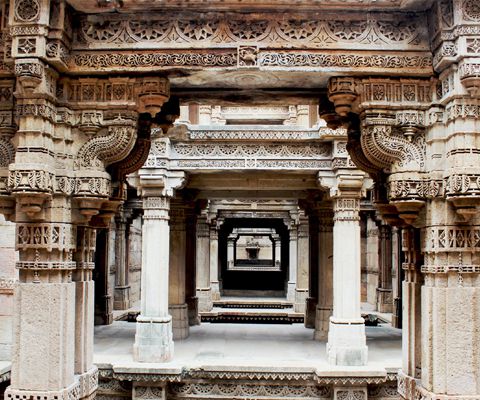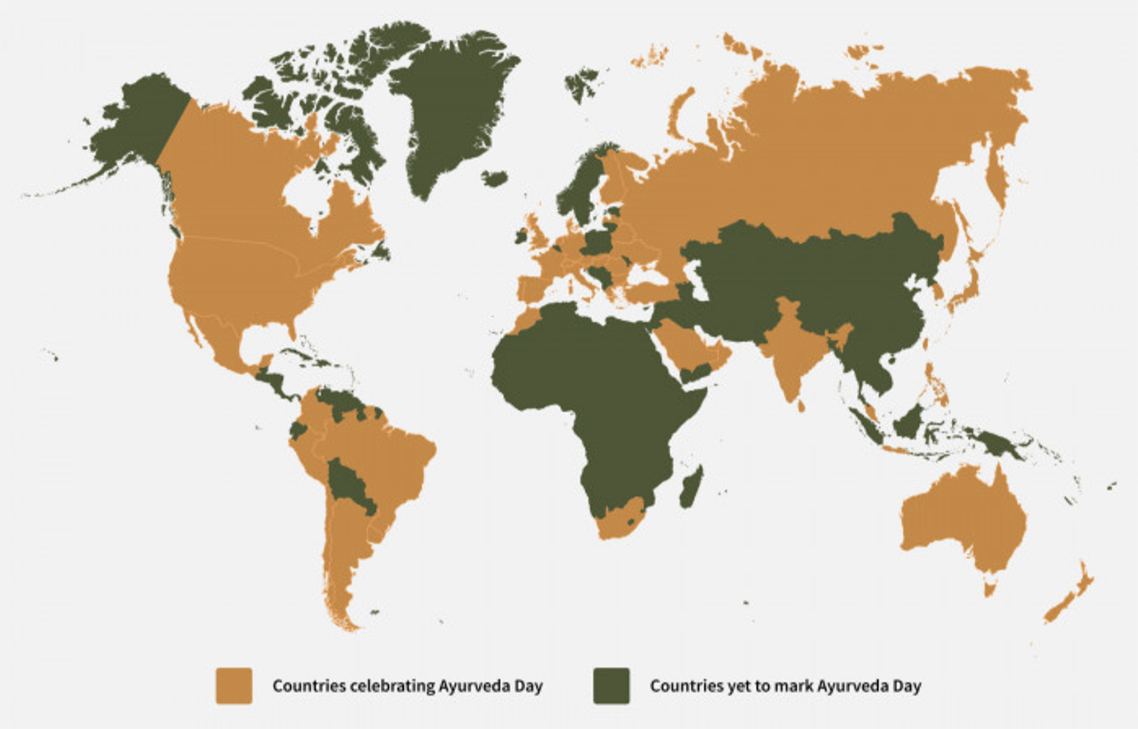Ayurveda Science

Ayurveda Science with Yoga and Meditation –
A Comprehensive Guide from ASHAexperience
The ASHA Team
Yoga and Meditation are the catalysts that drive this Ayurveda science of life in human beings, purifying and nourishing the mind, body, and soul. Ayurveda takes care of the person’s both physical and mental wellbeing with an ayurvedic diet and healthy lifestyle and Yoga deals with harmonizing of mind, body, and soul.
Ayurveda Science believes that life is sustained with the perfect balance of mental, physical, and spiritual factors. These are constituted by the body (Sharir), senses (Indriyas), mind (Satwa), and spirit (Atma), and emphasizes good health and prevention of illness through lifestyle practices.
Ayurveda health includes various methods like the yoga practice or the asana (physical postures) and pranayama (breathing techniques) that help in meditation or stillness of the mind bringing us in unison with nature to achieve the healing of the body and mind.

Evolution of Ayurveda and Yoga- A brief knowledge
According to modern Ayurvedic sources, the origins of Ayurveda have been traced to around 6,000 BCE when they originated as an oral tradition. Some of the concepts of Ayurveda have existed since the times of Indus Valley Civilization. The first recorded forms of Ayurveda as medical texts evolved from the Vedas.
Ayurveda is said to be an eternal science that first existed in the universal consciousness (Brahma) before it was passed from the creator to the ancient Indian mystics through meditation. Having survived and grown through the changes of time, Ayurveda has been acknowledged all across the world backed by scientific evidence.
We find mention of Lord Dhanvantari in the history of Ayurveda (in both the Vedas and Puranas). He was the physician of the Gods and an excellent surgeon. It mentions that worshipers pray to Dhanvantari seeking his blessings for sound healing.
Though Yoga was being practiced in the pre-Vedic period, the great Sage Maharshi Patanjali systematized the then existing practices of Yoga, its meaning, and its related knowledge through his Yoga Sutras (aphorisms).
Yoga Sutras of Patanjali is a collection of 196 short verses that serve as a guide to attain wisdom and self-realization through yoga. The text is estimated to have been written in roughly 400 C.E. and is regarded by many as the basis of yoga philosophy.
The 196 sutras are separated into four padas (chapters):
• Samadhi,
• Sadhana,
• Vibhuti, and
• Kaivalya.
The text itself is open to interpretation by the practitioner, but at its core, the Yoga Sutras are intended to provide depth and practical wisdom to help yogis and yoginis explore the central meaning of yoga.
What is Ayurveda Science of Life, Yoga – Asanas, Pranayama, Dhyana, and Meditation?
– Learn from ASHAexperience
Let us understand briefly one by one
1. What is Ayurveda?
2. Why Ayurveda?
3. Ayurveda Health – The Science of Life
4. Understand Ayurveda Health with Tridoshas
5. What is Yoga and Meditation?
6. Ayurveda and Yoga are Natural Ways of Building your Immunity and have a Balanced Life
7. Top 5 Ayurveda food you should eat every day
8. Top 5 simple Yoga Postures that you can start practicing from Today
9. Top Countries around the world that have started with Ayurveda practice
10. What we do at ASHAexperience for Ayurveda Health and Yoga– a Complete wellness program – First time in Europe
1. What is Ayurveda?
Ayurveda is the science of life that teaches us the way of living in synchronization with the healthy vibes of nature. Ayurveda is a science of Self-healing. By understanding your own unique nature or body constitution, you begin to understand how you interact with your environment and others – thus practicing a healthy lifestyle that will lead you towards self-healing free of ailments or diseases.

2. Why Ayurveda?
To understand the importance of Ayurveda, let us understand the origin of Vedas. Vedas are the most ancient scriptures written by great scholars and mentors that decipher the secrets of life and the universe with a bigger landscape of understanding the science behind all of this existence.
Among the four Vedas, Rigveda, Yajurveda, Samaveda, and Atharvaveda mention of yogic lifestyle, and Ayurveda is found to be mentioned in Atharvaveda.
Let us understand about the four Purushartha or “ the object of pursuit” as mentioned in the Vedas
1. Dharma – The Discharge of Responsibilities, righteousness, moral values
2. Artha – Acquisition of Wealth, prosperity, economic values
3. Kama – Fulfilment of Desires, pleasure, psychological values
4. Moksha – Liberation, spiritual values

3. Ayurveda Health – The Science of Life
Ayurveda has been majorly divided into three classics including
1. Charaka Samhita– The Charaka Samhita is believed to have arisen around 400-200 BCE. It is one of the oldest and the most important ancient authoritative writings on Ayurveda.
2. Susruta Samhita – The Sushruta Samhita is an ancient Sanskrit text on medicine and surgery, and one of the most important such treatises on this subject to survive from the ancient world.

Each of the above branches of Ayurveda concentrates on various aspects of prevention and cure of diseases with a holistic healthcare approach and wellness. These ancient scriptures define the ayurvedic treatment with different types of management strategies including ayurvedic treatment with chanting, through plant and animal parts, through divine rites, and through human contrivance by means of ayurvedic medicine.
4. Understand Ayurveda Science with Tridosas
What are Tridosas?
The human body is made up of the five elements that form the entire universe.
The five elements are :
Ether (space), Air, Fire, Water, and Earth.
Tridoshas are the three components of the body, which bring health when in balance, and produce diseases when out of balance. Tridosha defines the three fundamental energies or principles which govern the function of our bodies on the physical and emotional levels. The three energies are known as Vata, Pitta, and Kapha. Each individual has a unique balance of all three of these energies.
The Vata dosha is said to be made up of the air and ether elements. This means that it has qualities that are similar to these elements.
The Pitta dosha is said to be made up of fire and water elements. Fire is more predominant, and those people with a predominant Pitta nature have many of the qualities of fire within them.
Within the Kapha dosha, there is a predominance of the water and earth elements. Kapha individuals tend to be cool, moist, stable, and heavy.
The five elements are the components of the three dosas – Vata, Pitta, Kapha, and Ayurveda states that a human being is essentially an assembly of Tridosas, the intelligent life principles that determine or governs the body, its organs, and their respective functionalities. It further states;
Vata
is responsible for the mobility or movement of body parts. It governs the nervous system and prana – the Life controls nerve impulses and all higher cerebral functions. This dosa also controls cell division, responsible for cell arrangement and formation of different layers of organ formation.
Pitta
is responsible for the process of transformation or metabolism in the organ and tissue systems. It regulates nutrition – digestion, absorption, assimilation, and metabolism.
Kapha
is the agent for strength and cohesion that holds body parts together. It is responsible for biological strength, vigor, provides immunity, and aids in healing. All the fluids running within our body systems are also governed by Kapha.
Hence, with Ayurvedic Science, we understand that the three dosas along with the five elements maintain the complete balance of our mind, body, and soul to channelize us towards healthy living. When we get ailments or diseases forming an obstacle in our healthy lifestyle, Ayurvedic treatment takes care of our body with the best preventive and curative measures to track us back to Healthy Living without disturbing our daily lifestyle. Learn the recommended Ayurvedic Foods for each Dosha
5. What is Yoga and Meditation?
Meditation or Dhyana is a part of Yoga, which is mostly performed after Yogasana or physical postures. After doing Yogasana, the body is filled with vital energy or Prana. These energies get channelized through our nervous system to our body during meditation practice.
Meditation and Pranayama or breath control techniques act as a catalyst along with the Ayurveda health and nutrition regime accelerates our healthy lifestyle by directing our mind, body, and soul to be in harmony with nature.

Each cell of our system represents the whole creation in every respect. If one experiences the oneness with this quantum realm, that person becomes a Yogi and attains Moksha – state of freedom. Freedom from all the ailments or obstacles that come in their path to achieve the goal of a healthy body and mind in this Life.
One must practice Ashtanga Yoga or 8 Limbs of Yoga.
What are the 8 Limbs of Yoga?
• Yama (attitudes toward our environment),
• Niyama (attitudes toward ourselves),
• Asana (physical postures),
• Pranayama (restraint or expansion of the breath),
• Pratyahara (withdrawal of the senses),
• Dharana (concentration),
• Dhyana (meditation) and
• Samadhi (complete integration)

When one practices the above 8 Limbs of Yoga, can embark on the journey to Self-realization leading to Liberation or Moksha overcoming every obstacle and ailments that the body undergoes in this journey of life. Prana – or the vital energy, that which permeates the entire Universe is the foundation and essence of all life. Prana flows in everything that exists. Furthermore, Prana is the connecting link between the material world, consciousness and mind. It is the energy of the body that activates the breath and the mindful stimulation of body parts which is responsible for all our physiological and psychological activities.
There are Five main Pranas.
What are the five Pranas?
Prana, Apana, Udana, Vyana, and Samana, which are responsible for different mechanisms of our body.
Prana is distributed throughout the whole body, through the network of the Nadis (nerves). There are 72,000 Nadis in the human body.
Of these, there are three Nadis of particular importance.
Ida, the “Moon System”, correlates with the left nostril and the Parasympathetic Nervous System. Pingala, the “Sun System”, correlates with the right nostril and the Sympathetic Nervous System. Sushumna, the “Central Nadi”, penetrates the spinal column and correlates with the Central Health and disease are part of everyone’s life related to nutrition, physical, mental, social, spiritual and other aspects. If one of the aspects suffers, then all other aspects get affected thus hampering the daily activities of individuals life. Hence Ayurveda recommends that we should take time to nurture and nourish our body, mind and soul to have a holistic wellness approach to balance the entire system.
6. How Yoga builds a Natural Immune System for You?

When the mind is calm and clear, an individual is able to handle every situation much better at all times. Yoga with its main components; Asanas, Japa, Pranayama and Meditation helps in bringing calmness to our mind and body. This enables clarity in our thinking, removes the guilt and negative impressions of the past, makes us apprehension-free of the future, and brings our focus to the present moment. Thus Yoga helps in building a strong immune system within our body making us embrace the goodness in us and the surrounding environment.
The body and soul are intricately connected with the state of our mind. The state of the mind relates to how we act and react to the information and experiences gathered by our senses with respect to our surroundings. Yoga practice escalates this state of mind.
Yoga practice is about building the immune system along with strengthening the inner peace thus gaining an insight into the well-being of mental stability and health. Yoga makes us connect within and understand the person as who we are. It guides us in – how we can enhance healthy sustainable living!
ASHAexperience talks about Ayurveda Food and Yoga Practice
Let us understand some Ayurveda food/nutrition and Yoga postures that can help us in building holistic wellness to our body system.
7. Top 5 Ayurveda food you should eat every day

Ayurveda food relates to the food that we eat every day. The best way to practice an ayurvedic diet in our everyday life is to first watch what we eat.
In Sanskrit, we call it Ahara – the diet or the food. According to Ayurvedic science, our daily food must have six tastes – sweet, sour, salty, bitter, pungent, and astringent.
ASHAexpereince group of Ayurveda doctors suggests you top 5 Ayurveda foods that enhance Sattva – purity that is beneficial for strong immunity, physical and mental strength, and proper digestion.
These Ayurveda foods help in detoxification that accelerates our metabolism leading to an active healthy lifestyle.
1. Ginger
Ginger is the best agent for anti-inflammation, accelerating your appetite, reducing intestinal pain, gas, bloating and keeping you away from cold & cough. Dry ginger powder when mixed with warm water can be best taken in an empty stomach to accelerate your digestion process for the entire day. Also, when applied along with almond oil can work wonders on the joints stimulating mobility.
2. Gooseberry
Popularly known as Amla – the Indian gooseberry rich in Vitamin C and calcium works as the powerful antioxidant, works wonderfully for digestion and cleansing the colon. Its antioxidant properties give you glowing skin and has anti-ageing properties . Amla oil is great for hair growth and fights against dandruff.
3. Curcumin/Turmeric
Curcumin, the superfood with its antifungal and anti-viral properties is perfect for detoxification, lowering blood sugar and for battling every kind of virus and bacteria. It is highly beneficial to drink turmeric milk along with pepper and honey. Turmeric juice or paste can also be applied directly to wounds and acne.
4. Clarified Butter/Ghee
Clarified butter is best for its omega-3 fatty acid content that helps lower your cholesterol and improves heart health. Ghee helps in accelerating your metabolism by burning the carbohydrates giving the right source of energy.
5. Mint/Pudina
Mint/Pudina has been one of the best Ayurveda foods for treating cold and cough congestions. When prepared as decoction/tea along with pepper, ginger, cinnamon sticks, lemon juice and jaggery/honey, it forms the best Ayurvedic medicine for sore throat, chest congestion, indigestion, recovering from skin related issues along with building your immune system naturally.
8. Top 5 simple Yoga Postures that you can start practicing from Today to Stay Active All Day
One has to align their mind, heart, soul and body to maintain a balanced healthy living. Some of the simple Yoga postures that you can start practicing from today at home –
1. Tadasana/Standing posture
Gives a good posture to your spine, works out in your abs, leg, and core – this posture helps in blood circulation, relieves stress, gives great stability and mobility. Improves your body’s digestion power and gives great posture while you sit and stand.
2. Uthanasana/Standing Forward Bend
This posture is beneficial for your back. The hamstrings, calves, lower back are stretched as you bend forward completely touching your palm behind the ankle and head to knee. This posture relieves chronic issues, lowers your stress levels, improves blood circulation, and makes you flexible.

3. Bhujangasana/Cobra Pose
The Cobra pose is the backbend pose where you raise your trunk and head with the palms support alone. The arms bent at the elbows and pressure put on the tows with navel pressed against the floor. This posture strengthens the spine, lungs, and abdomen. Helps in smoothing sciatica and relieves any stress or fatigue. Improved blood circulation helps your skin radiate with glow and this asana or posture is helpful in improving male and female reproductive systems.
4. Adho Mukha Svanasana/Downward Dog
Adho Mukha Svanasana – known as the downward-facing dog pose. In Sanskrit words Adho means downward, svan means dog, Mukha means face and Sana means asana or pose. This posture comes with loads of beneficial outcomes including remedies from hair loss problems, helping the pituitary gland, helping diabetic patients, keeping the cold and cough at bay, cures constipation and piles, improves gut health, and improves eyesight as well.
5. Badakonasana/ Butterfly pose
Engage your groin area with the Butterfly pose or Baddha Konasana. This asanas benefit can be completely reaped well when done in the early morning with an empty stomach. This posture helps in stimulating the urinary bladder, relieves fatigue, and improves digestion power. This pose helps to open the hips and increases blood flow to the reproductive organs.
Statutory advice: Consult a doctor before beginning an exercise regime and correlate clinically if you have any physical discomforts or injuries.
Note: Always practice yoga asanas on a yoga mat or a carpet on an empty stomach ( gap of food intake of at least 2 hrs). Do not practice directly on the floor. ASHAexperience triggers your own ability to heal yourself. Connect with our Ayurvedic Therapists and Yoga Teachers who can guide you with the complete body health care system building a healthy lifestyle.
9. Top Countries around the world who have started with Ayurveda practice
European Ayurveda Association (EUAA) have their primary mission in bringing awareness about Ayurveda science and wellness to the Public. They have started multiple Ayurveda training programs establishing research and scientific study on Ayurveda. Along with these programs, they are promoting the best Ayurveda products all around European Countries.
Ayurveda Practice in Germany, Europe

In European countries especially in Italy and the UK along with Germany, there are many Ayurveda doctors who have done specialization in the field of Ayurveda medicine prescribing Ayurveda treatment, and have come from world’s most recognized medical education universities. Multitude of seminars and training programs on Ayurveda health and Ayurveda medicine are conducted to create a framework for Ayurveda medicine, nutrition and therapy. Ayurveda clinics and Ayurveda treatment centers and hospitals have been well-established in top European Countries as you read this statement.
Ayurveda Practice in Netherlands, Europe
Maharishi Ayurveda, Netherlands has well-established its roots in European countries since 1987, with their authentic Ayurveda medicine and other Ayurveda products. The World Panchakarma Guide of Vedic Society who are with the mission of Global Healing have started a project named Akshaya Tretya in May 2008.
Panchakarma is profoundly followed in Netherlands, Europe top cities and localities. Panchakarma is one of the ideal ayurvedic treatments for the best preventive and curative measures to be taken to keep our mind, body and soul disease free and ailments free. Panchakarma involves five methods in purification and ayurvedic healing of the complete body system rejuvenating every cell of your body aligning them to their functionalities right on track. There are many dedicated Panchakarma clinics that have been set up for this type of Ayurveda treatment on the grounds of authentic medical proof of extreme healing and wellness approach towards the human body.

International Ayurveda Congress 2018 was held in Leiden, Netherlands, Europe with top eminent medical doctors as speakers including Tony Nadar, MD, Ph.D., MARR – patron of Congress, His Excellency Shripad Yesso Naik – Minister of AYUSH, Government of India, His Excellency Mr. Venu Rajamony – Ambassador of India to the Kingdom of Netherlands, Dr. Med Walter Mölk, Austria – Consciousness-based Herbal Medicine in Maharishi Ayurveda – International Director Maharishi Ayurveda and others. The IAVC Resolution stated the following:
“It is resolved to establish and promote Ayurveda in the areas of education, research, training, practice and products in the West. This Congress presented a platform for all leading Ayurveda organizations worldwide and leaders in various fields of Ayurveda to jointly work on preventing disease, promoting longevity, and treating chronic disorders using an integrative approach. Actions and steps in achieving following goals will be taken in the areas of Education, Practice, Research and Products.”
Source:
https://internationalayurvedacongress.com/wp-content/uploads/IAVC_Resolution_2018_Leiden.pdf
Ayurveda practice in Spain, Europe
International Spa in Spain have been established in Spain, Europe with Ayurveda Treatment incorporating Ayurveda practice in everyday life. There are famous Yoga and Ayurveda Retreats that motivate people on Ayurvedic living and practicing Yoga and meditation in their daily life.
The Ayurvedic origin from Indian philosophy is gaining popularity among European countries especially in Spain with many inhibitions of Ayurvedic Mediterranean diet into people’s everyday life.
People in Spain have started practicing the Detoxification of the body with Ayurvedic treatment and fasting therapy stated in the Ayurveda scriptures many thousand years ago by our great scholars and Rishis/Hermits who can connect with the Universe conscious. Detoxification – an ayurvedic remedy – flushes out toxins out of your body, giving you a natural energy booster keeping an active metabolism thus improving immune system and restoring complete balance in your body system.
Yoga and Ayurveda have become popular retreats in Spain. Especially in Madrid. Spain there are many Ayurveda services related to ailments of different parts of your body.
Ayurveda practice in UK
The BAAAP – The British Association of Accredited Ayurvedic Practitioners – established in the year 1999 started promoting Ayurveda in the west bringing up the philosophy of ayurvedic healthcare – A Professional Ayurvedic Association devoted to voluntary service in spreading awareness and the establishment of an Authentic, Effective, Safe and Undiluted system of Ayurveda.

Ayurveda practice in the UK has been well-established by many Ayurveda practitioners incorporating Ayurveda therapies in people who want to lead a well-balanced ailment-free life. There are many proofs coming up from earlier centuries with respect to Ayurveda treatment in the UK
In Britain, by 1814 an Indian named Dean Mahomet and his Anglo-Irish wife Jane had started Ayurveda practice among people in Britain. They were offering “Indian remedies” for a variety of ailments. Studies reveal that – they had even established a bathhouse in Brighton offering “Indian Vapour Baths” and “Shampooing with Indian Oils” that had similar ingredients found in Ayurvedic Massage directed in Ayurveda Science. A wide range of ailments including rheumatism, consumption, skin problems and poor blood circulation were
treated with Ayurveda. Later Mahomet’s ayurvedic services were patronized by Kings George IV and William IV(173).
Ayurveda practice in Zurich, Switzerland
According to Business standards, Switzerland had started having a community of Ayurveda practitioners by 2019, stated by Indo-Swiss Ayurveda Foundation. The Swiss government in 2015 recognized and sanctioned Ayurveda medicine and therapy, making it the first Western country to do so.
The Indo-Swiss Ayurveda Foundation (ISA) has given the Swiss authorities a list of 450 formulations that are being included in the curriculum for the examinations which will be held for medical practitioners in Switzerland.
Swiss Ayurvedic Medical Academy and European Institute of Vedic Studies have come up with a wide variety of Ayurvedic Treatment and promotion of Ayurveda products that heals the body naturally. The mission of the EVIS ayurvedic institute is to establish Ayurveda education and build a community of Ayurveda practitioners thus creating the awareness of the ayurvedic health care system.
10. What we do at ASHAexperience for Ayurveda Health and Yoga/Meditation?
A Complete wellness program – First time in Europe
ASHAexperience for the first time brings you a complete holistic wellness program in Europe that comes as an Ayurveda package including an unparalleled range of Ayurveda doctors, Ayurveda Nutritionists and Therapists, Ayurveda Chefs, Yoga practitioners, and Ayurveda Travel & Healing programs for every individual who can practice Ayurveda health care in their day-to-day life without changing their regular lifestyle.
Our Ayurveda doctors and therapists can be consulted online over voice/video who can guide you with immaculate precision about your body system, on any ailments and suggest you the best for a well-balanced healthy lifestyle. Contact ASHAexperience to guide you on how to heal your body by yourself with various Ayurvedic practices in your life-giving you an ongoing support system throughout your healing journey.
At ASHAexperience we organize Ayurvedic healing events for you, presented by renowned Ayurvedic Doctors, Healers, Therapists, Yoga Teachers, Ayurvedic Nutritionists, and Chefs, from around the world, who guides us in this Holistic Health and Wellness Journey of Ayurveda.

We believe in collaborative relationship-based care where our Ayurvedic Doctors, Ayurvedic Practitioner, Ayurvedic Supplement Brands, Ayurvedic Nutritionists & Chefs, Yoga, and Meditation Trainers are in sync. Contact the team who passionately works together to hold your hand in this healing journey.
